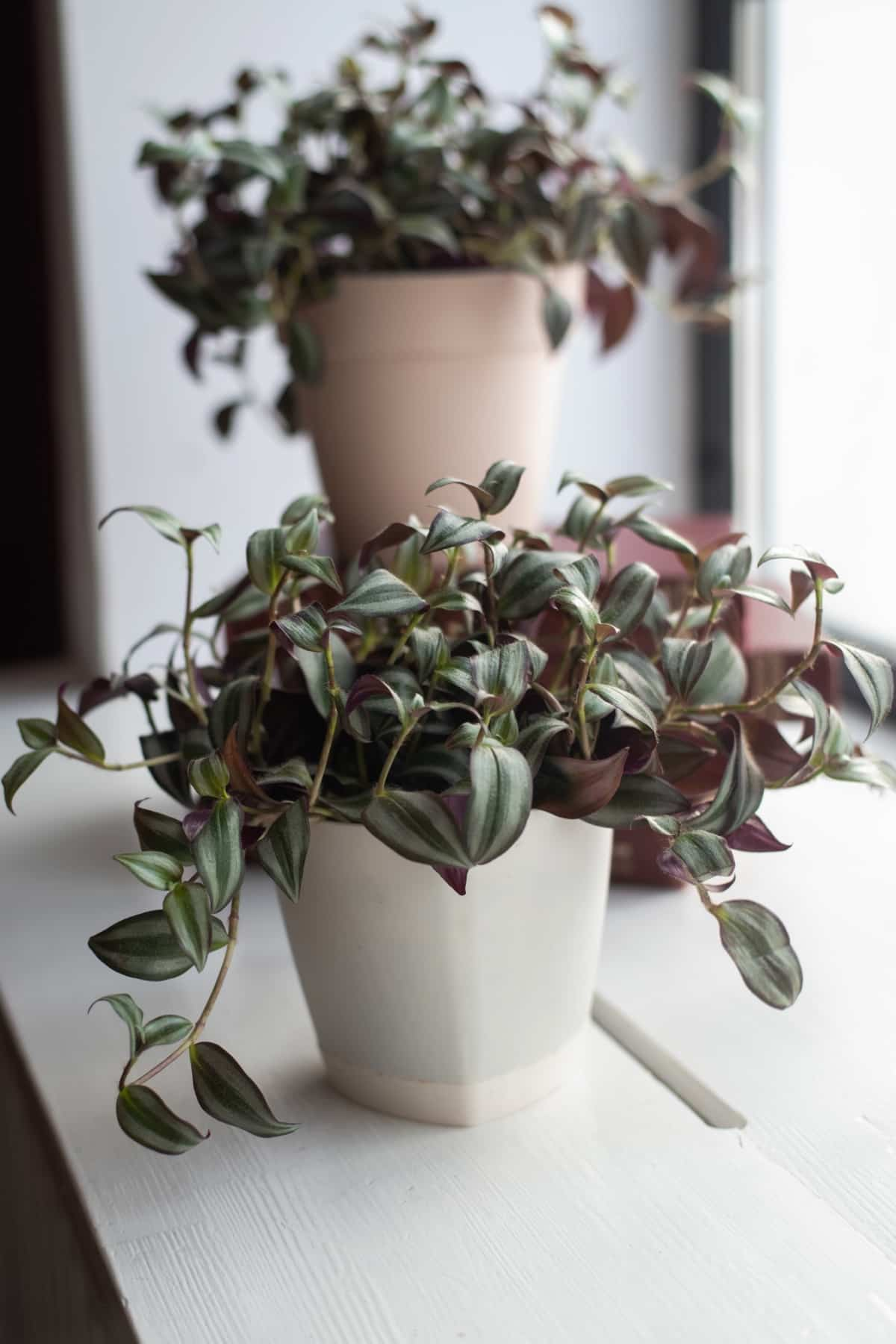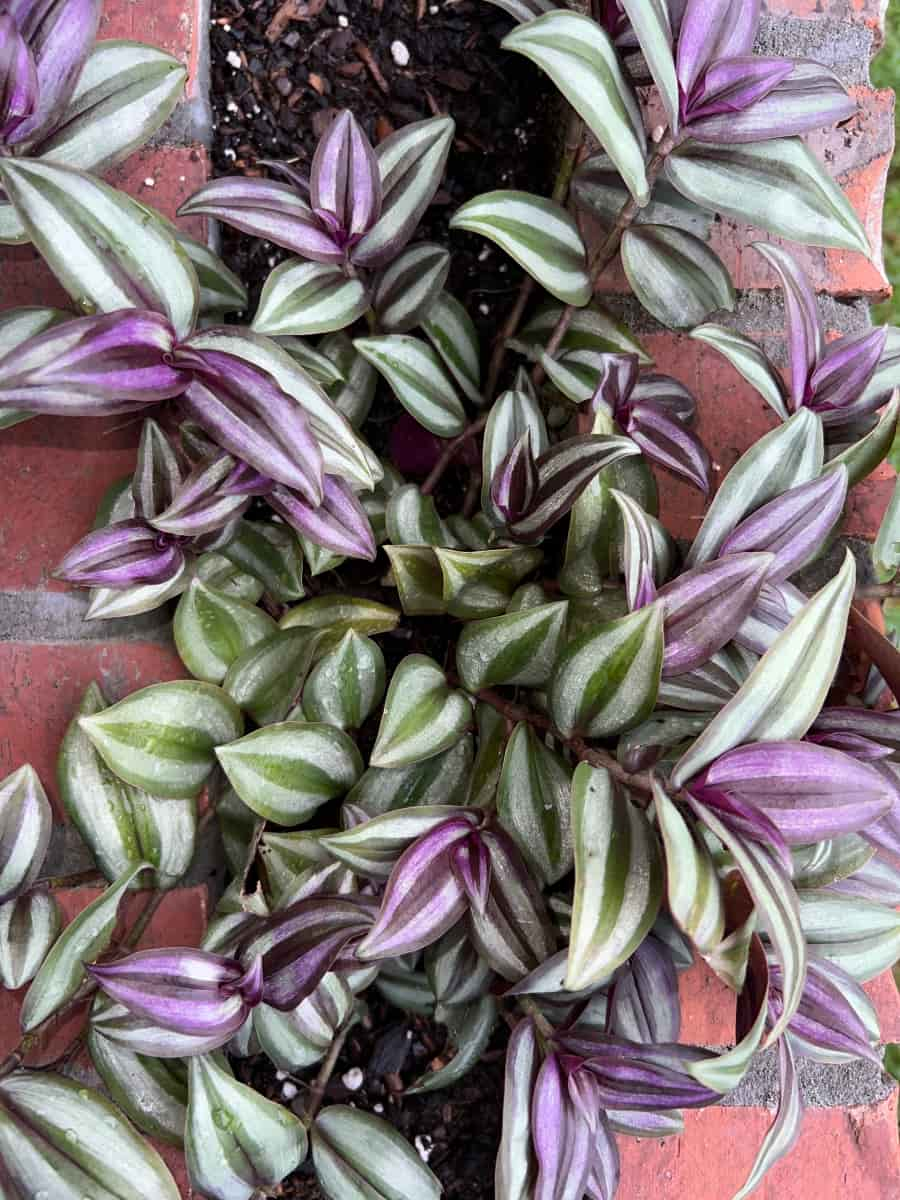Growing the Wandering Jew plant is a straightforward and gratifying method for enhancing your indoor garden, introducing vibrant colors and vitality to any room. This manual furnishes detailed, step-by-step directions to ensure your propagation endeavor is both successful and enjoyable.

Wandering Jew Propagation
Wandering Jew Characteristics, Growth Habits, and Ideal Conditions for Propagation
The Wandering Jew, a vibrant and fast-growing plant, is popular for its striking foliage and ease of care. This plant is known for its ability to thrive in a variety of conditions, though it prefers bright, indirect light and moist soil. Understanding how to make a wandering jew bushy involves regular pruning, which encourages a fuller growth habit.
These plants, under ideal conditions, can live for several years, though individual stems may have shorter life spans. When considering how long wandering jew plants live, it’s important to remember that with proper care and propagation, you can continuously renew your plant.
Selecting Healthy Parent Plant
Choosing a healthy parent plant is crucial for successful propagation. Search for a wandering jew plant with healthy, vibrant leaves, sturdy stems, and no indications of pests or diseases. The health of the parent plant directly impacts the success rate of propagation, as healthier plants provide more robust cuttings. When selecting stems for cutting, opt for those that are lush and have a good number of leaves, as this indicates a vigorous plant.
Gathering Propagation Supplies
To propagate wandering jew, you need a few basic supplies: a sharp pair of scissors or pruning shears, a container for rooting (either a pot for soil propagation or a jar for water propagation), fresh potting soil if choosing soil propagation, and water. Ensure that your scissors or shears are clean to prevent the spread of diseases. For water propagation, a clear container can be helpful to observe root growth, but any container that can hold water will work.
In case you missed it: How to Propagate Coleus: Grow from Cuttings and Leaves

Taking Cuttings
When taking cuttings, identify where to cut wandering jew for propagation: look for a segment with at least one leaf node, as this is where new roots will emerge. Cut just below the node, ensuring each cutting is about 4-6 inches long. This length is ideal as it allows enough room for root development without being too large. Ensuring a precise cut is crucial to avoid harm to both the parent plant and the cutting.
Preparing Cuttings
Once you have your cuttings, prepare them by removing the leaves from the lower half of each stem. This exposes the wandering jew leaf node, which is essential for root development. If propagating in water, you can place the cuttings directly into the water after removing the leaves. However, if you’re propagating in soil, you might want to let the cuttings sit out for a few hours to form a callous over the cut end, which can help prevent rot.
Planting Cuttings in Soil
To propagate wandering jew in soil, fill your chosen container with fresh, well-draining potting soil. Make small holes in the soil and insert the prepared cuttings, ensuring the leaf nodes are buried. Carefully compact the soil around the cuttings to secure them in position. This method is ideal for those who want to establish their plants in soil from the start, as it can sometimes be challenging to transition plants from water to soil.
Watering and Humidity
After planting, water the soil thoroughly, ensuring it’s evenly moist but not soggy. Wandering jews prefer a humid environment, so maintaining adequate moisture is crucial for successful root development. Caution should be exercised to avoid excessive watering, which may result in root rot. To elevate humidity levels around the plant, consider placing a water-filled tray nearby or utilizing a humidifier.
Rooting in Water (Optional)
Propagating wandering jew in water is a popular and straightforward method. Simply place the prepared cuttings in a container filled with water, ensuring the leaf nodes are submerged. Change the water regularly to keep it fresh and oxygenated. Wandering jew can live in water for an extended period, and how long wandering jew can live in water depends on the conditions, but they can’t live in water forever. For long-term growth, it’s advisable to eventually transfer them to soil.
In case you missed it: Mastering the Art of Propagating Plants: How to Grow Plants by Root Cuttings

Monitoring Growth
Monitoring the growth of your wandering jew cuttings is essential for successful propagation. After planting or placing in water, watch for signs of root development. In soil, this may take a few weeks, whereas roots can appear in water within just a few days. Look for new leaf growth as an indication that your cuttings are thriving.
If propagating in water, check the roots regularly for health and length; once they reach about an inch or more, they are ready for soil if you choose to transplant. Avoid disturbing the soil frequently, as this can harm the delicate new roots. Instead, observe the plant’s overall health and growth from above, looking for new leaves and stems as positive signs.
Transplanting
Transplanting wandering jew cuttings from water to soil is a delicate process that should be done once the roots have developed sufficiently. Choose a pot with adequate drainage and fill it with a well-draining potting mix. Carefully remove the cuttings from the water, handling the roots gently to avoid damage.
Prepare individual holes in the soil for each cutting, ensuring that the roots are completely covered with soil. Firmly press the soil around the base of the cuttings. After transplanting, thoroughly water the soil and keep a close eye on the plant’s condition, adjusting care as necessary. It’s normal for the plant to experience some leaf drop or wilting after transplanting, as it can be a bit of a shock, but with proper attention, the plant should recover and resume growth.
Common Mistakes to Avoid in Wandering Jew Propagation
When propagating wandering jew, there are common mistakes to avoid. Overwatering is a frequent issue, particularly in soil propagation, leading to root rot and fungal diseases. Make sure the soil maintains moisture without becoming excessively waterlogged. Additionally, let it partially dry between watering sessions. Another error to avoid is employing dull or contaminated cutting tools, as these can harm the plant and introduce diseases. Always use sharp, clean scissors or shears.
In case you missed it: How to Propagate Brussels Sprouts from Seeds: Sprouting Techniques

Additionally, avoid taking cuttings from unhealthy parent plants, as this can result in weak or diseased offspring. If propagating in water, remember that wandering jew cannot live in water forever; prolonged water propagation can lead to weaker plants. Finally, be patient; while wandering jews are fast growers, propagation takes time, and rushing the process can harm the plant.
Conclusion
Propagating wandering jew plants is a rewarding and relatively simple process that allows you to multiply your plants effectively. By carefully selecting healthy parent plants, preparing and planting cuttings correctly, and providing the right water and humidity conditions, you can encourage robust growth. Monitoring the growth of your cuttings, knowing when to transplant, and avoiding common mistakes are key to ensuring healthy, thriving plants. Remember, whether you choose soil or water propagation, patience and attentive care are your best tools for successful wandering jew propagation.
- Feed Your Flock for Less: Top 10 Tips to Save on Chicken Feed
- Ultimate Guide to Ossabaw Island Hog: Breeding, Raising, Diet, and Care
- Hatching Answers: The Top 10 Reasons Your Chickens Aren’t Laying Eggs
- Eggs and Economics: Breaking Down the Cost of Raising Backyard Chickens
- Defend Your Greens: Proven Methods to Keep Iguanas Out of Your Garden
- Ultimate Guide to Cinnamon Queen Chicken: A Comprehensive Guide for Beginners
- Ultimate Guide to California Tan Chicken: Breeding, Raising, Diet, Egg-Production and Care
- Ultimate Guide to Marsh Daisy Chicken: Breeding, Raising, Diet, and Care
- 10 Types of Chicken Farming Businesses You Can Start for Profits